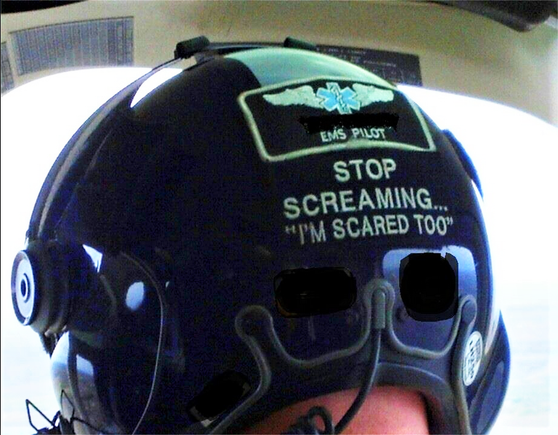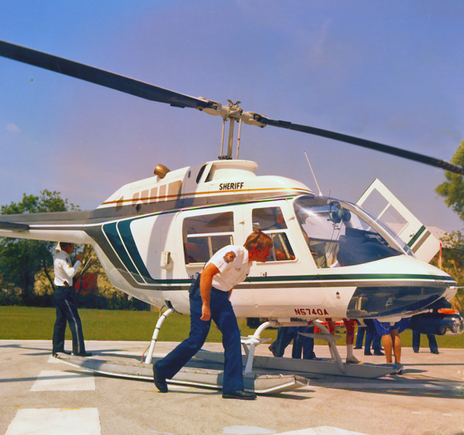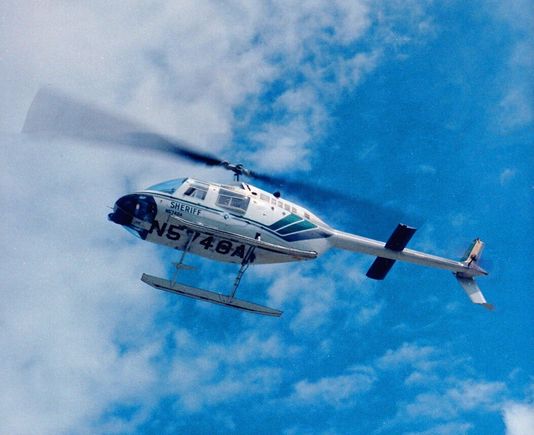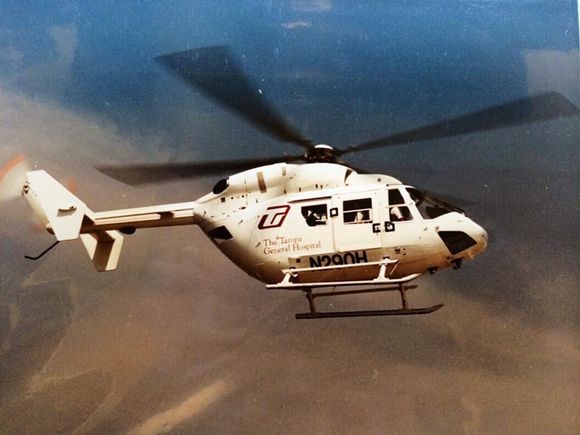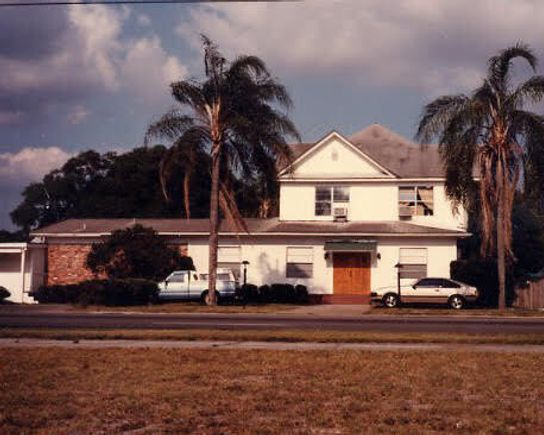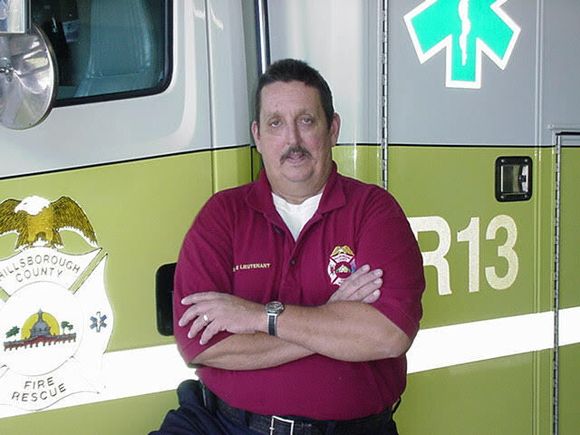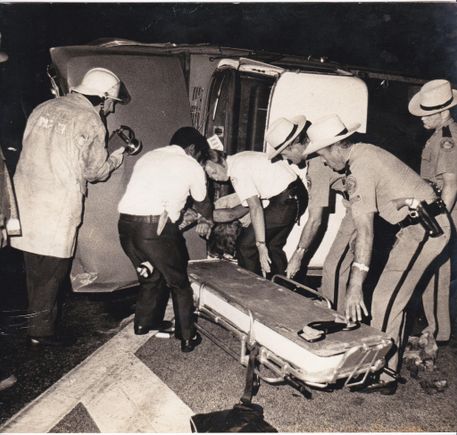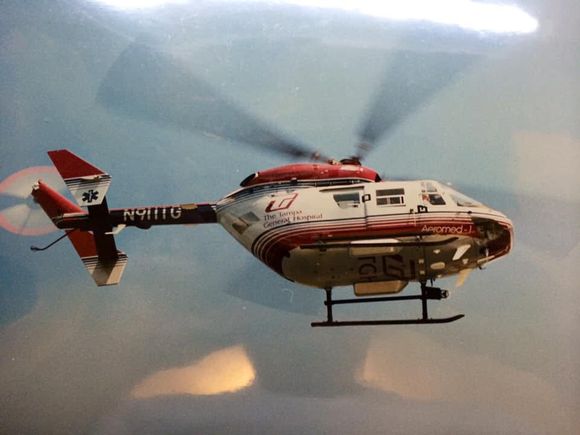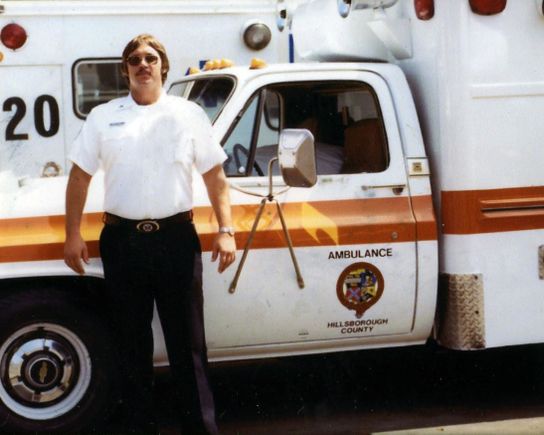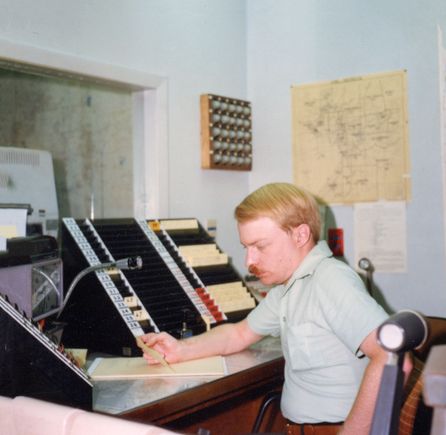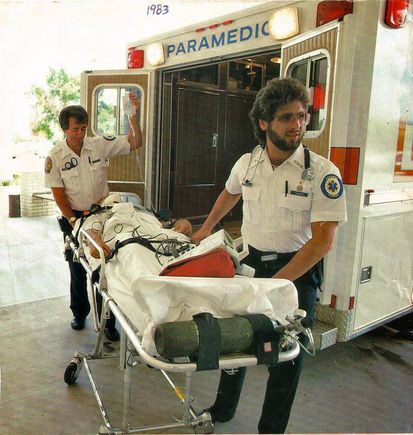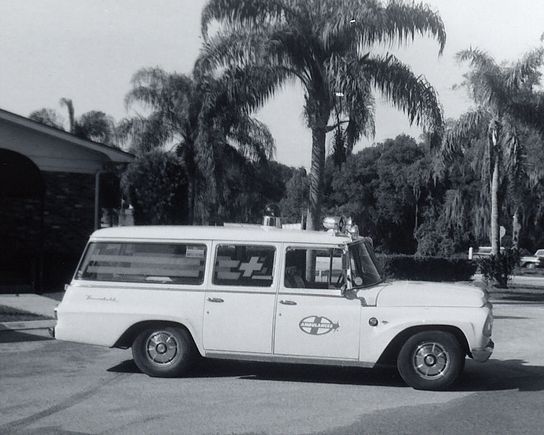EMS History
Helicopter use for critical patients began during the Korean and Vietnam wars to quickly move injured troops to a safe area for treatment by waiting doctors. It was a proven fact that the sooner the better. Today we call it the Golden Hour. This is the time immediately following a traumatic injury to medical treatment that can be done to prevent irreversible internal damage and give a person the best chance of survival. It covers a wide range of injuries like car
accidents, falls, gun shot or stabbing and industrial accidents. If you were at a scene the paramedics would be heard to say "this patient needs bright lights and cold steel". We knew to go and go now.
In Hillsborough County Tampa General Hospital was the only Level 1 Trauma Center. That means they had doctors, surgical and respiratory staff 24/7 to take care of the patient's immediate needs. In some spots in the county that was up to 45 minutes away. This was not counting traffic. There had to be a better way. And the idea was born to go back to what we remembered worked. The Hillsborough County Sheriff's allowed us the opportunity to use their BK1 Jet Ranger helicopter that they used for surveillance. As soon as the patient was evaluated it set the wheels in motion. It began April 1,1985.
The helicopter would receive the call. They would drop off the observer who was the look out for police activity while the pilot flew. The passenger seat would be folded down and they were on their way. A lot of these guys flew in Vietnam. In the meantime it was hectic activity getting the patient ready and stable. Extricated from a wreaked car, pulled from a home or wherever they were when they were injured. Airways to help with breathing, medications as necessary including IVs, splints and placed on a back board and strapped in. Ready for the helicopter as it landed. The side door opened and the attending paramedic would hop in with limited equipment due to space and weight. The patient was then lifted from the ground and the patient's feet were placed where the front passenger's seat was folded down and their head in the back seat next to the medic. The door slammed shut and you were off from a parking lot, road or field. It was loud and hot. The paramedic did whatever was required in that tiny space and they got to the hospital in 10 minutes. There was a lot of training but in the end it was like a well oiled machine.
Times have changed and the Sheriff is back doing his job and the paramedics aren't leaving their partners behind to fly. The new helicopters come with a nurse and paramedic of their own along with their pilot and much larger crafts. Patient's are getting there in their golden hour to increase their chance of survival. And now other patients are getting to the hospital for Stroke intervention and Cardiac procedures which are also time sensitive for a positive outcome.
The pictures are of the SO1 helicopter that we flew in in the air and two training pictures. The helmet for a laugh and Aero med in the right picture.
Article provided by Janet Harris
Some images provided by the Woody Harris Collection
